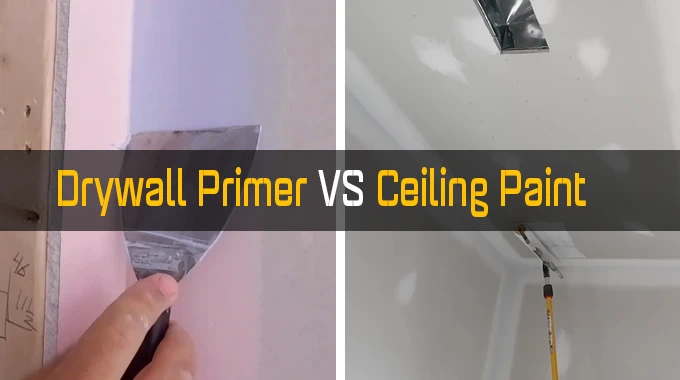Last Updated on March 21, 2023
Want to make your drywall or ceiling project stand out? Figuring out the difference between drywall primer vs ceiling paint is essential for achieving a fresh, polished look any DIYer will love.
Drywall primer is an essential undercoat that will even out any surface irregularities, while ceiling paint provides superior coverage with vivid colors that won’t fade over time. Consider various factors when selecting these products for optimal results.
When homeowners consider things like analysis and application processes, coverage bonds, color choices & ongoing maintenance, they’re making an informed choice about what’s best for them.
Drywall Primer Vs Ceiling Paint: 8 Major Differences
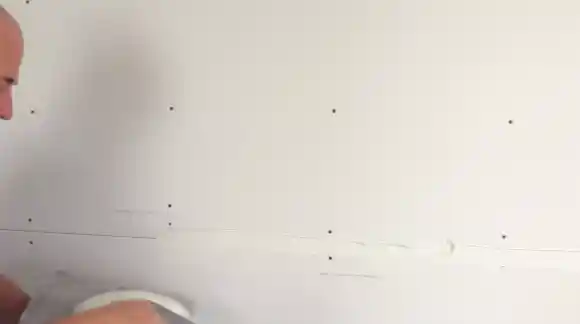
When tackling your next home improvement project, it’s essential to consider the distinct benefits of drywall primer and ceiling paint. Before making a decision between the two, you should be aware of these 8 major distinctions:
Types of Each Product
For Drywall Primer
There are three main types of drywall primers available today: water-based, oil-based, and shellac-based.

Water-Based Primers: These primers are the most common type of drywall primer. They are easy to use, clean up easily with soap and water, and do not emit strong odors. Water-based primers also dry quickly. But they may not be as effective at blocking out tough stains or covering dark colors.
Oil-Based Primers: These primers provide better coverage over stains and dark colors than water-based primers because they penetrate deeper into the surface. They also hold up better against scrubbing damage and staining from smoke or fire damage.
But oil-based primers can be difficult to clean up since they require using mineral spirits or turpentine, have strong fumes that can cause respiratory irritation, and take longer to dry than water-based primers.
Shellac-Based Primers: These primers offer superior adhesion to glossy surfaces such as glass or tile and seal out tough stains like smoke damage or grease splatters. They also have excellent adhesion properties when applied over glossy paints when other primers fail.
But shellac-based primers need special solvents for cleanup, which can be expensive if not purchased in bulk form. And these solvents can be flammable, so extreme care must be taken when working with them near an open flame or spark source such as a hot light bulb or stove element.
For Ceiling Paint
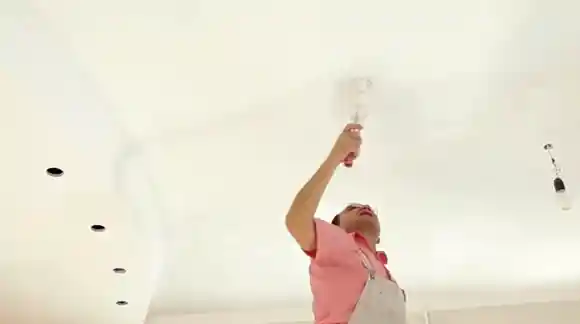
There are also three main types of ceiling paint: flat/matte finish, eggshell finish & satin finish, semi-gloss & high gloss finishes. Each ceiling is created with a different level of reflectivity, depending on how much shine is desired.
Flat Paints & Matte Finish Paints: These ceiling paints provide a subtle and uniform look to any room while concealing small imperfections. They offer minimal reflection when viewed directly overhead under normal lighting conditions.
Eggshell Finish Paints & Satin Finish Paints: These versatile paint finishes add character and depth without drawing attention to flaws. Their diffused light makes smaller spaces seem bigger instead of concentrating them in one area as more reflective paints do.
Semi Gloss & High Gloss Finish Paints: These finishes offer maximum reflection but show every mark made by tools used during the application process because they do not hide any imperfections quite well behind their shiny coating.
These two types tend only to get applied onto trim work, including baseboards, door frames, chair rails, window sills, etc.
Durability Analysis
The durability of drywall primer and ceiling paint depends on several factors, such as the type of product used, the environment where it is applied, and the amount of wear it receives over time.
Oil drywall primer is typically more durable than ceiling paint due to its oil-based formulation. This makes it more resistant to water, humidity, and temperature fluctuations, which can cause cracking or peeling in cheaper products.
And this drywall primer helps seal porous surfaces such as drywall joints and creates a strong bond with the surface that helps protect against moisture damage.
Ceiling paint is often less durable than drywall primer since it has a thinner consistency and lacks an oil base. It is typically latex-based and designed to be applied in thin layers that don’t provide much protection from moisture or temperature changes.
Although ceiling paint may last several years if properly applied, it is not as long-lasting as drywall primer and will require more frequent touch-ups or reapplication over time.
Application Process
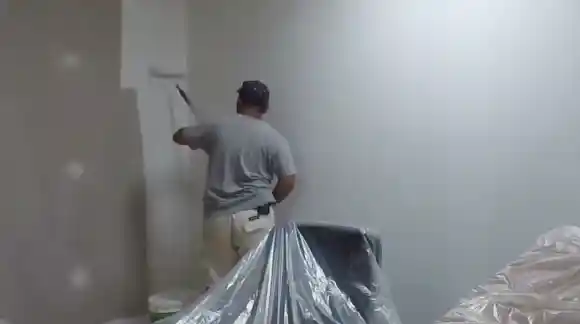
Generally speaking, applying drywall primer requires more preparation work than applying ceiling paint because it must be applied in thick layers that need to adhere well to the surface.
To do this, you’ll need to thoroughly clean any debris off of the wall first before rolling on two coats of primer using a high-quality roller (or brush). After each coat has dried completely (usually 30 minutes to 1 hour), lightly sand any rough spots before applying the third coat if desired.
Applying ceiling paint requires less prep work but needs some basic cleaning beforehand. Once you’ve wiped down any dust or dirt from the surface, you can use a sprayer or roller to apply one even coat of ceiling paint across the entire area.
Keep in mind that this application process should be done quickly since latex paints start drying almost immediately after being laid down. If too much time passes between each section being painted, the result will be an uneven finish with visible lines between sections.
Coverage and Bonds
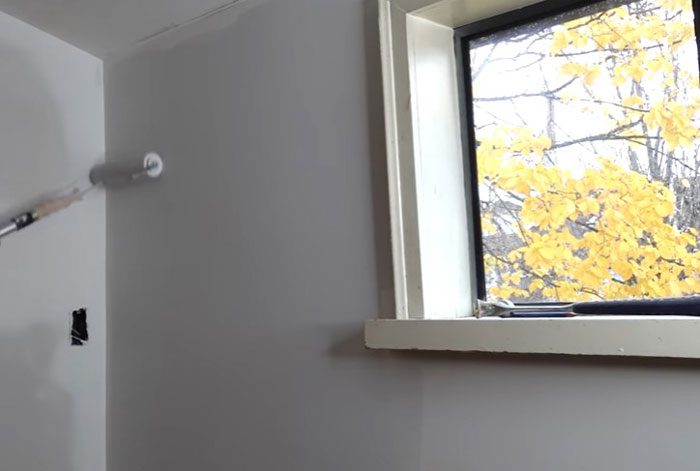
Drywall primers are formulated with higher solids concentrations, so they tend to cover larger areas faster than ceiling paints without requiring multiple applications. One thick coat can cover 250 to 400 sq ft per gallon, depending on the absorption rate of your particular project wall/ceiling material.
Furthermore, they create stronger bonds between existing surfaces due to their higher adhesion levels. This means they won’t peel away easily like weaker latex paints might when exposed to extreme temperatures or humidity levels over time.
Ceiling paints have lower solids levels which make them better suited for thinner applications. But this also results in weaker bonds once dried, which can lead to flaking over time when exposed to specific environmental conditions.
It’s important that you choose a quality product, so you get maximum coverage without sacrificing adhesion strength. Generally speaking, higher-priced brands offer superior performance when compared to cheaper alternatives.
Color Selection Options
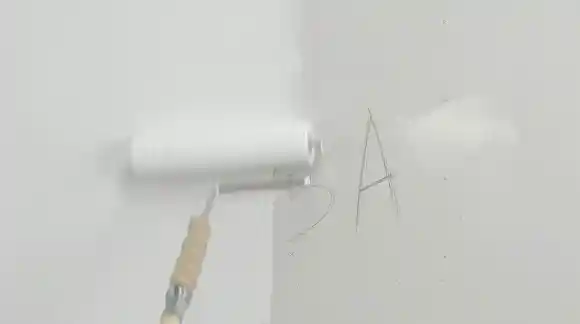
Both drywall primer and ceiling paint come in several different colors ranging from whites, and light grays all the way up through deeper shades like navy blue and forest green. What color best suits your needs will depend largely on what type of look you’re trying to achieve with your final project design scheme.
Lighter hues generally help open up smaller spaces, while deeper tones can help create an airier atmosphere inside larger rooms with higher ceilings. If opting for multiple coats, keep in mind that different hues often require a different number of applications, so plan accordingly when selecting colors.
Health Considerations
Drywall primers are generally made up of acrylic resin composition, which can contain volatile organic compounds (VOCs) that can be released into the air while the product is being applied.
This can cause short-term health effects such as headaches, nausea, throat irritation, and eye irritation. Additionally, long-term exposure to VOCs has been linked to respiratory illnesses, cardiovascular diseases, and even cancer.

Ceiling paints are typically latex-based products that may also contain VOCs in addition to other hazardous materials such as isocyanates. To prevent inhaling any vapors emitted when applying paint, wear protective gear such as a respirator or face mask. It is also helpful to work in well-ventilated areas whenever possible.
Cost Comparison
The cost of drywall primer and ceiling paint can vary significantly depending on a variety of factors, including brand name, quality level, and size of the container. Generally speaking, drywall primers tend to be slightly more expensive than ceiling paints due to their higher quality ingredients which lead to better adhesion and coverage over large areas.
But ceiling paints also come in a wide range of prices depending on the type of finish desired or the brand chosen. Some are quite affordable for budget-conscious projects or those on a tight timeline where expediency takes precedence over longevity.
Maintenances
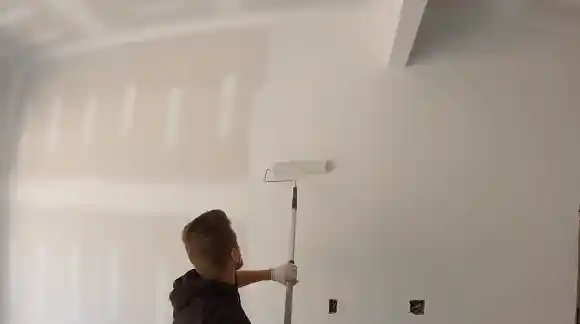
Drywall primers and ceiling paints both require regular maintenance to keep them looking fresh and performing optimally over time. For example, drywall primers should be checked periodically for signs of chipping or fading due to sun exposure since they provide less protection against UV rays than most ceiling paints.
On the other hand, ceiling paints require more frequent cleaning as dust often accumulates quicker due to their smoother surface, which tends not to attract dirt as textured surfaces do. This can lead to discoloration if not addressed promptly, so regular dusting or wiping with a damp cloth is recommended for optimal results with minimal effort.
Can You Use Drywall Primer as Ceiling Paint?
Yes, you can. Interior latex drywall primer is particularly well-suited for use on a smooth or lightly textured ceiling, as it helps to fill in any imperfections and provides good adhesion for the finish coat.
For ceilings with a deeper texture, a high-build primer is recommended, as it will provide additional filling properties and improved surface coverage. This type of primer is generally thicker and requires an extended drying time before the finish coat can be applied.
It’s important to remember that regardless of which type of primer you choose, multiple coats are not necessary to achieve a perfect white finish. Just make sure that it applies uniformly over the previous color.
How Many Coats of Primer Do You Need On a Ceiling?
Usually, one or two coats of drywall primer should be sufficient when preparing your ceiling for painting. Generally speaking, the goal should be achieving uniform coverage over the existing color without applying more than two coats.
But if any irregularities are present on your ceiling’s surface (e.g., bumps or cracks), you may need to apply additional coats of primer until those issues have been adequately covered. Applying too many coats can lead to excessive thickness and cause your paint job to look uneven when finished, so try not to go overboard.
Can I Use Ceiling Paint As a Wall Primer?
Certain circumstances allow you to do so. But it is pertinent to understand that walls often contain more porous surfaces than ceilings do and therefore require specialized primers for better adhesion.
Because ceiling paint has a lower viscosity and is less durable on such surfaces, it is not recommended to be used as a wall primer if your walls have been patched with joint compound recently.
In these situations, it would be best to use a dedicated interior drywall joint compound instead. You’ll get better adhesion and a more uniform coating over any irregularities on the wall this way.
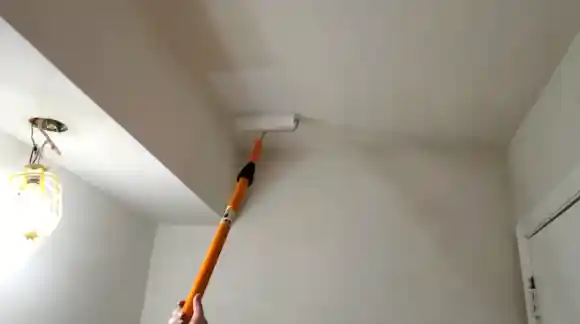
Which Option Is Right for Your Project?
Drywall primer and ceiling paint have pros and cons, but they ultimately serve different purposes depending on where you’re using them. The drywall primers are designed to provide superior adhesion, whereas ceiling paints offer better coverage to hide imperfections on the surface.
When selecting which type of paint is right for your project, it’s essential to consider factors such as construction material, durability analysis, the application process, coverage and bonds, color selection options, health considerations, and maintenance requirements.
We hope this blog post has helped give you a better understanding of the difference between drywall primer vs ceiling paints so that you can choose the best option for your project.
